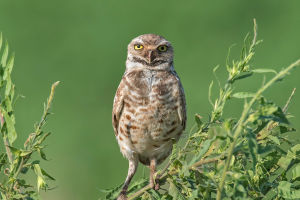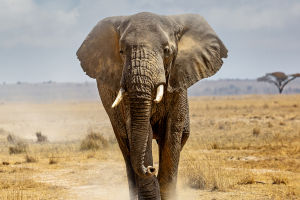Cat Falling Trick
Lykkers, have you ever seen a cat fall from a height and wonder how it always seems to land on its feet? It's a skill that has fascinated many of us for years.
Whether it's a daring leap from a shelf or a slip from a tree branch, cats always seem to manage to land gracefully on their paws. In this article, we'll explore the science behind this amazing ability and how cats have evolved to be such agile creatures. Spoiler: it's not just luck!
1. The Cat's Reflex System
One of the key factors that make a cat so skilled at landing on its feet is its highly developed reflex system. This ability, often referred to as the "righting reflex," allows a cat to adjust its body position mid-air to ensure that it lands on its feet. The process begins when a cat falls or jumps from a height.
As soon as a cat starts to fall, its brain sends signals to the body, activating the reflex system. The cat's spine is extremely flexible, allowing it to rotate its upper body quickly. At the same time, the cat extends its front legs, which helps it to twist and orient itself. The back legs follow, positioning the body to land feet first. This complex process takes just a fraction of a second, but it's what enables cats to land with such precision.
2. The Role of the Cat's Flexible Spine
Cats' flexible spines play a crucial role in their ability to land on their feet. Unlike humans, whose spines are relatively stiff, cats have incredibly flexible backbones that allow them to rotate their bodies in mid-air. This flexibility is the reason why cats can perform the impressive "flip" maneuver to correct their position when falling.
The spine of a cat acts like a spring, allowing it to bend and twist in ways that most animals cannot. This unique spinal structure helps cats to twist their torsos and shift their body weight quickly, giving them the agility to adjust their position while falling. It's this ability to twist their body in mid-air that allows them to land upright, even if they've fallen from a significant height.
3. The Importance of Timing
While the cat's flexible spine is important, the key to landing on their feet also lies in perfect timing. Cats are known for their incredible sense of balance, which plays a big role in this skill. As they begin to fall, cats instinctively know when to start the rotation to adjust their body position.
This timing is essential for the cat to land safely. If the cat waits too long to start rotating, it may not have enough time to complete the flip and end up landing awkwardly. Conversely, if the cat starts too soon, it may not be able to adjust its body fully before hitting the ground. In either case, the cat may not land as gracefully as it usually does. However, in most cases, cats manage to get the timing just right, thanks to their natural instincts and well-developed reflexes.
4. The Role of the Cat's Inner Ears
Another important factor in a cat's ability to land on its feet is its sense of balance, which is controlled by the vestibular system in the inner ear. This system helps the cat detect its orientation and adjust its body position accordingly.
When a cat is falling, the inner ear sends signals to the brain about the cat's current position in space. This allows the brain to assess the best course of action for the cat to take. In combination with the reflex system and flexible spine, the vestibular system ensures that the cat can quickly adjust its body to land on its feet.
5. Why Cats Can Survive Falls?
Another intriguing aspect of cats' falling abilities is how they seem to survive falls from heights without injury. While it might seem like a miracle, the reason cats can survive falls is due to their unique body structure. Cats have a low terminal velocity, which is the maximum speed they can reach when falling. This is because their small size, lightweight body, and large surface area (due to their fur) help slow them down during the fall.
Additionally, cats often spread their bodies out when they fall, much like a parachute, which further reduces their speed. This allows the cat to land with a reduced impact force. While falling from high places still carries risks, cats are far more likely to survive a fall than larger animals, thanks to their specialized body structure and falling technique.
6. Why Cats Still Get Injured Sometimes?
Although cats are amazing at landing on their feet, they are not invincible. While their natural instincts and reflexes give them a better chance of survival, they are not always guaranteed to land perfectly. Cats can still get injured, especially if they fall from an extreme height or land on a hard surface. For example, a fall from a great height, such as a building or a high tree, could cause severe injuries despite the cat's best efforts.
This is why it's important for cat owners to keep their pets safe, particularly in environments with high places where falls might occur. Even though cats have a remarkable ability to land on their feet, they can still suffer from injuries if the conditions are not ideal.
7. What We Can Learn from Cats?
Lykkers, the way cats land on their feet is more than just an impressive trick—it's a lesson in adaptability and resilience. Cats are able to adapt to situations quickly, using their flexible bodies and sharp instincts to survive challenges in the wild. We can learn from their ability to stay calm and composed, even in situations that might seem dangerous.
In our own lives, we might face challenges or unexpected "falls" that require us to adapt quickly and make the best out of a difficult situation. Like cats, we can rely on our instincts, our flexibility, and our timing to overcome obstacles and come out on top.
Conclusion: Nature's Incredible Design
Cats are truly a marvel of nature, with their ability to land on their feet being just one of the many amazing traits they possess. From their flexible spines to their impeccable timing, everything about a cat's body is designed to help it survive in the wild. While we may not be able to do a perfect "cat flip," we can certainly take inspiration from their agility, instincts, and resilience in the face of challenges. So, the next time you see a cat landing gracefully after a fall, just remember—there's a lot more science behind it than you might think!
-
 Butterfly Love SignalsScent of Love: How Butterflies Use Invisible Perfume to Flirt, Impress, and Find Their Perfect Match in the Air!
Butterfly Love SignalsScent of Love: How Butterflies Use Invisible Perfume to Flirt, Impress, and Find Their Perfect Match in the Air! -
 Owl Love CallsWhy Do Owls Hoot All Night? Discover How These Mysterious Birds Flirt Loudly in the Dark to Find True Love!
Owl Love CallsWhy Do Owls Hoot All Night? Discover How These Mysterious Birds Flirt Loudly in the Dark to Find True Love! -
 Emotional Animal LivesThis Is What Anxiety Looks Like in Animals—It’s Devastating!
Emotional Animal LivesThis Is What Anxiety Looks Like in Animals—It’s Devastating!
Copyright © zogu 2021 - 2025. All Right Reserved.